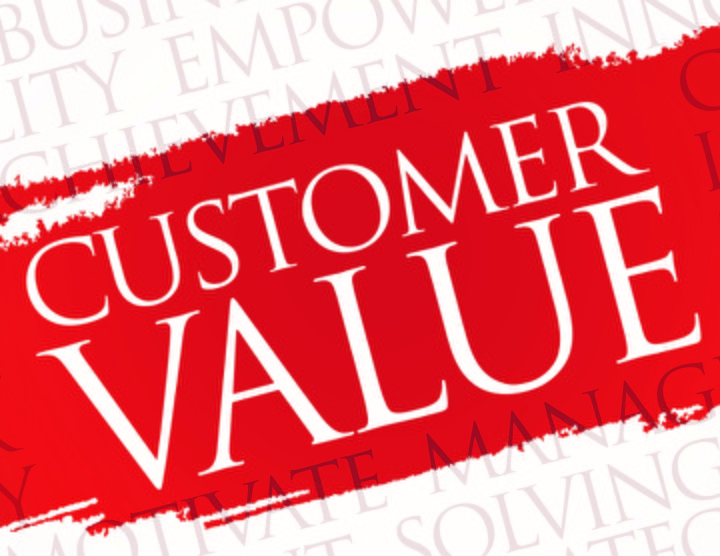Lean Communication for Sales: Value
In the first post of this series, we learned that buyers avoid talking to salespeople as long as they can, because most of them provide too little value and waste too much of their time. While we will address both sides of that equation in the next few posts, the first and most critical task is to provide value.
Lean communication starts—and ends—with value because if you don’t have something useful to say, it does not matter how concise or clear you are. The same idea clearly applies to selling: if you’re a salesperson, you must be useful to the customer—or they are totally justified in avoiding the sight or sound of you.
Years ago, when I used to train the business sales reps for a wireless carrier, we would role-play sales calls, in which the rep would spend the first few minutes telling me all their great features and what they could do for me, and I would usually counter each one by telling them their competitor could do the same thing. Usually, they would then say something like, “You get me in the deal.” I would then ask, “So What?” Rarely did I hear a convincing answer to that question.
If the customer asks you what value you add to their decision process, would you be able to answer the question convincingly? It’s tough, but if you pay attention to these five ways of generating and communicating customer value, you probably won’t even get the question:
Focus first on the why: You need to boost the why/what ratio in your sales conversations. Salespeople typically focus too much on the what, which is what they want the customer to do, what they want them to buy, what their product does, etc. They don’t spend enough time on the why, which is why the customer needs to make a change, why this is the best choice for them to make that change, and why now. By focusing first on the why, both parties can unpack the necessary elements of value so that they can then figure out the best what. (If this is starting to sound like an Abbott and Costello routine, I apologize.)
That’s why your plan for every sales call should begin, not with your call purpose, (which is what you hope to get from the call) but the value proposition for that particular meeting. Why should the prospect or customer take time out of their life that day to listen to what you have to say?
If you want to be even stricter, ask yourself honestly if the customer would pay to meet with you. It’s probably not to find out about the latest bell or whistle you’ve added to the product, or to check out the new white paper your marketing folks wrote. The only reason a customer would conceivably meet with you is if you have a plausible case that you—and only you—can improve their outcomes in some way.
One more hint: if you can’t think of the value the customer will receive in return for their time—don’t go.
Improve outcomes: This is a detailed and more specific look at the why. To focus on the right outcomes, you research, analyze, and question these four possible areas that might indicate a need:
- Problems: Known issues that are bothering them and/or costing money.
- Opportunities: Improvements in products, technologies, or ways of doing things
- Changes: Ongoing or imminent changes in their current environment they will have to adapt to
- Risks: Anything that could potentially hurt them or prevent the outcomes they want
Answer the question: the main question is “What do you want me to do and why should I do it?”, which is covered in the first two points above. But ATQ also applies when the buyer asks you a question. The whole reason they are talking to you is because despite all that reading of stuff on websites, they still have questions. And when they do have a question, they want someone to answer it honestly, completely, and quickly. The salesperson who is the most responsive in answering their questions will add the most value.
Outside-in thinking: We naturally view the world from the inside-out. We have our own thoughts, desires, needs and aspirations, and we view the world through the lens of how we can get what we want through other people. Outside-in thinking flips that around. It’s about seeing the world through the eyes of the customer, and then working backward to figure out how they can get what they want through us. OIT means that you talk far more about the customer than you do about yourself.
Preserving the relationship: Lean communicators value relationships as much as the next person, but they perhaps define the foundation of relationships differently. It is less about liking that it is about trust. Lean communication is not about “schmoozing” and telling great jokes. Of course relationships are important in sales, but the best relationships are nurtured by the salesperson’s sincere and transparent desire to put the customer’s needs first. If you follow the first four practices, the relationships will take care of themselves, even in those occasional situations when you tell the customer something they might not want to hear. You know the old saying, “Friends don’t let friends (fill in the blank)”, sometimes a relationship calls for one party to say something that the other person does not want to hear. This does not always make for the most amicable or pleasant relationship, but in the long run it’s what builds the most trust and the greatest value.
If you focus first on communicating value, your customers will gladly pay to have “you” as an added feature in every sale!
Other posts in this series:
Lean Communication for Sales: Talk Less, Sell More?
Lean Communication for Sales: Top-Down Communication





[…] Lean Communication for Sales: Value […]
[…] Lean Communication for Sales: Value […]